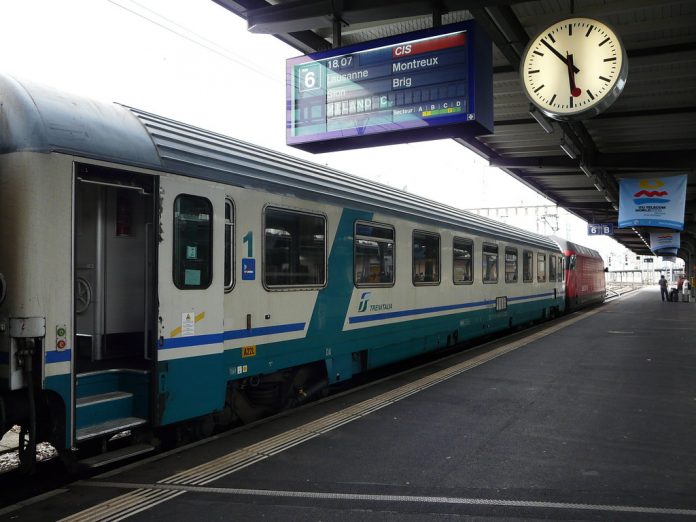
By Giovanni B. Ponzetto, a financial adviser with 32 years of experience, based in Turin, Italy
As an Italian private sector worker, the dismal economic performance of my country during the past two years has not been a surprise at all. As a matter of fact, Italy has had a dismal economic performance for practically the whole of my adult life. Between 1999 and 2019, in terms of economic growth, it has underperformed France for about 22%, Spain for about 24% and Germany for about 36%, something which is mentioned in Italian PM Mario Draghi’s “National Recovery and Resilience Plan”, which serves as Italy’s pitch to get 191.5 billion euros in grants and cheap loans from the EU’s “European Recovery and Resilience Facility (RRF)”. A separate EU programme, called React-EU, provides for a further 13 billion euros of grants. Italy tops this up with national funds.
In 2020, Italy’s economy shrank with about -9%. That’s with restrictions for employers to fire employees and other extraordinary measures, meaning this figure may understate the real economic damage of Covid.
An important misconception is to assume that the main problem for EU economies, and Italy in particular, would be that the public sector would suffer from a lack of capital to finance projects that hardly have an effect on economic growth and productivity. Nevertheless, this is the fundamental assumption behind the EU’s 800 billion euro “Next Generation EU”* venture.
In fact, Italy can serve as an example of how racking up public debt levels – in Italy now at 160% of GDP – does simply not work to turn the economy around. On the contrary, most attempts to reform Italy’s economy have failed. Unfortunately, the “National Recovery and Resilience Plan” isn’t likely to be different.
Despite the fact that it mentions in its introductory pages that “the young as well as women have been hit disproportionately” by the Covid crisis, Draghi’s plan ignores how this contradicts the fact that most of the money the plan intends to spend is pumped into fixed assets with questionable value.
Of the 16 spending categories, the biggest single item is 30 billion being reserved for energy efficiency and restructuring of buildings. The next-largest sum, just over 28 billion euro, billion, is for railways.
Of the 16 categories of expenditure, the biggest single item is for almost EU30 billion to energy efficiency and restructuring of buildings, a sum that could help improve a huge stock of historical structures. The next-largest sum, just over EU28 billion, is for railways.
3/END pic.twitter.com/t2VZNaQaj9
— Alessandro Speciale (@aspeciale) April 21, 2021
In this regard, it’s worthwhile to listen to a friend of mine, Francesco Ramella, a scholar who has written extensively on railway and high speed rail economics in Italy.
In his book, “the last train”, he has estimated that during the last thirty years, the net cost of Italy’s railways to taxpayers – after subtracting the revenues – amounts to a massive 470 billion euro, which is equal to 20% of Italy’s gigantic public debt burden.
He compares this with the net cost to taxpayers of Italy’s ever suffering airline Alitalia, which “only” amounts to 8 billion euro, and over a much longer period, since 1947, something which is nevertheless seen as more controversial.
PAGLIUZZA E TRAVE
Alitalia, di cui si parla moltissimo, dal 1947 al 2020 è costata ai contribuenti 8,1 miliardi (stima di @ugoarrigo).
Dal 1990 al 2016 il conto per le ferrovie, di cui si parla pochissimo, è stato di 440 miliardi.https://t.co/1duGRROrCj pic.twitter.com/nJnv7sWhRt— Francesco Ramella (@ramella_f) March 19, 2021
That’s not even mentioning his assertion that also the environmental benefits of railways, including of high speed rail, are much to be desired for.
In sum, looking at the historic experience with this kind of spending, we can safely change the name of the particular “infrastructural investment” section of the plan into “stranded assets”.
It really should be questioned whether Italy’s “National Recovery and Resilience Plan” is either “resilient”, let alone capable of delivering “recovery”. A brief glance at the plan actually reveals the opposite appears to be the case.
One upside is that Italy will perhaps be less of an underperformer in the next few years, given that the NGEU arrangement attempts to lock in all EU member states into the same logic of attempting to generate growth by means of public spending.
Italy’s economic foundations were not built on gigantic public spending plans but on the contrary on a network of small and medium-sized entreprises. However, precisely these companies have been progressively squeezed for over a decade now. Effective tax rates north of 70% are not unheard of, which is compounded by crushing bureaucracy.
Some of the billions of euros Italy is receiving as part of its share of the EU's 800bn euro "recovery fund" are going to Italy's space programme (who knew Italy had one):https://t.co/I4QmbMUmse#anditsgone #NGEU #spacerecovery
— Pieter Cleppe (@pietercleppe) April 30, 2021
Draghi’s plan includes a bit of cash meant to speed up the court system, but the brunt of the spending is destined for projects that fuel, rather than reduce the weight of overall bureaucracy.
Even the part of the plan dedicated to “reform” and “simplification” heavily relies on the administration itself to come up with ideas on how to deliver this goal.
Fundamentally, therefore, Italy would be better off without this plan.
Last but not least, let’s not forget that this spending exercise will be financed by joint mutualization of debt at the EU level – when national ratification is completed. To assume that this will be a “one-off”- exercise is misguided. Instead of paying back this jointly issued debt, EU governments may opt to simply issue more of it. Combined with the importance of the European Central Bank for Italy’s government finances, this means that the influence of European supranational institutions – the ECB and the European Commission – over Italian national policy choices has become greater than ever. In turn, misallocation of capital – Italy’s specialty since time immemorial – is being enshrined at the European level.
Disclaimer: www.BrusselsReport.eu will under no circumstance be held legally responsible or liable for the content of any article appearing on the website, as only the author of an article is legally responsible for that, also in accordance with the terms of use.












